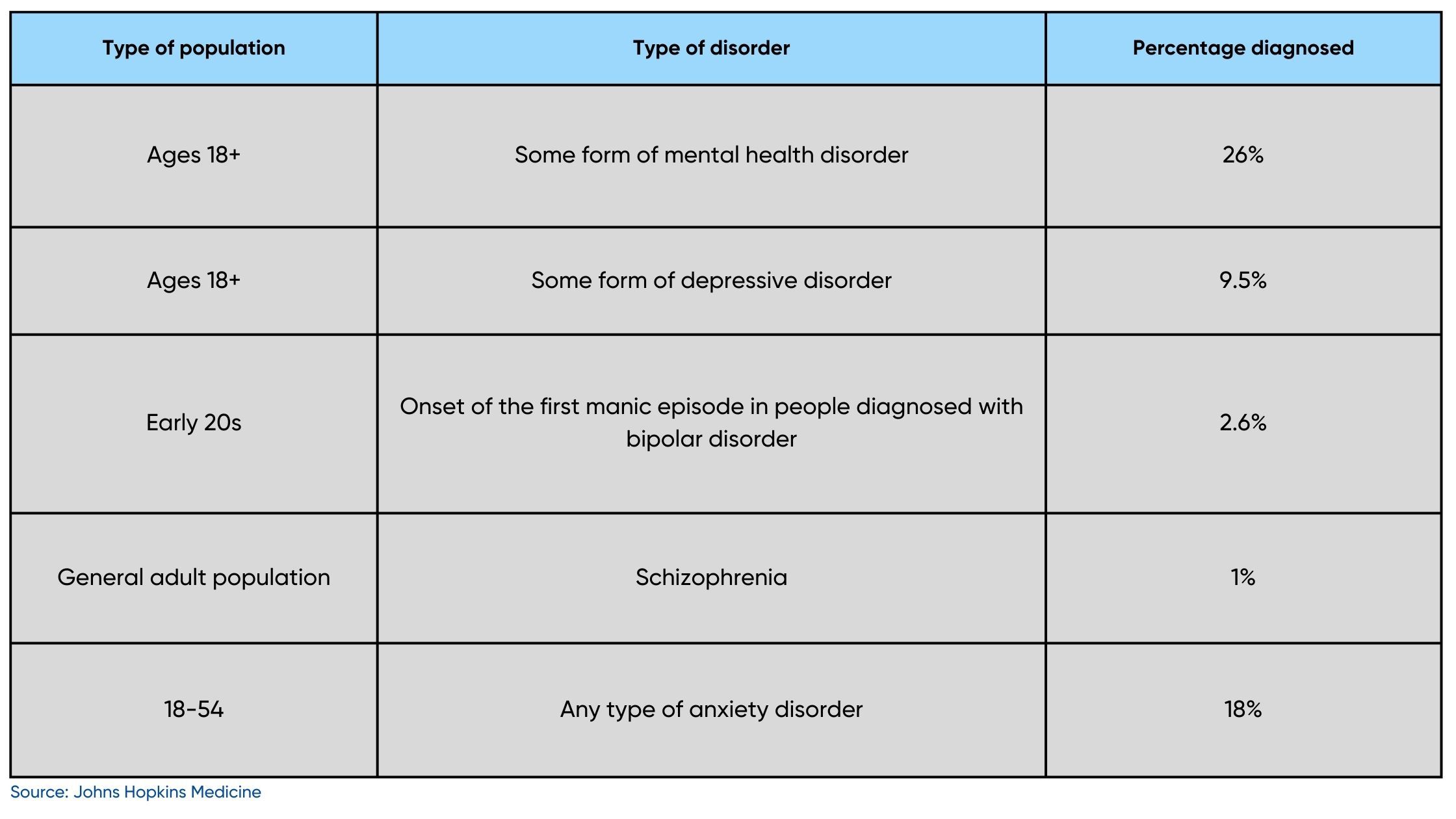The state of mental health disorders in America
There has been a renewed focus on mental health in America since the pandemic. What is the current state, how do we understand it, and what is being done to address it?
August 23 2022 | Madhavi ShivaprasadThe state of mental health disorders in America
In recent times, particularly post-pandemic, there has been an increased focus on improving mental health care access for American citizens. Towards the end of July 2022, it was reported that a sum of $300 million has been allotted to schools for the purpose of expanding and improving access to mental health care services, and governors of the various states were also encouraged to invest more in providing mental health care to American students. This move came as part of an administrative strategy to address America’s national mental health crisis.
What is the current scenario of mental health in America? Why is focussing on mental health important in the present times? Which groups are the most affected and why?
General overview of the mental health status in America
To understand why the success of these moves is such an important step, we need to take a relook at the mental health statistics in the country. Studies have shown that one in four people (approximately 26% of the population) in America are diagnosed with a mental disorder every year.

The implementation of certain social, administrative and judicial measures has affected the ways in which people’s mental health and their access to care are affected.
Heavy reliance on law enforcement to tackle behavioral health problems: Whenever a behavioral health crisis is faced, the most common way to handle it has been to involve hospitals, prisons, and law enforcement. Many people face these because of substance abuse or mental health issues which are emergencies that can be tackled better through the establishment of a behavioral health crisis continuum within communities. Such measures focus more on peer and community support systems as well as access to 24-hour helplines and behavioral health specialists when needed. Such measures have been shown to reduce interaction between people with mental illnesses and the law.
Disproportionate representation of people of color within the justice system: Multiple factors influence the prevalence of mental illnesses. Historically, people of color including Black, Asian and Hispanic communities have been America’s vulnerable populations. Studies indicate that they have historically had relatively less access to mental health care services and are therefore more likely to deal with law enforcement and face punishment rather than treatment.
Increased screen time among teens and young adults: Increased use of social media platforms among teens and young adults has also drawn attention to the abuse of digital privacy due to unauthorized use of children’s personal data for targeted advertising. Extended use of these platforms has also shown a decline in a healthy social life for teenagers, making the environment unsafe and more prone to peer bullying, abuse and exploitation.
Suicide rates: Apart from this, most people who commit suicide had some form of diagnosable depressive or substance abuse-related mental health disorder. Women attempt suicide more often than men, and four times more men commit suicide than women.
Impact of Covid-19 on mental health

Thus, the mental health crisis in America has always been quite concerning. These statistics have only become more alarming post-pandemic, with access to mental health care for vulnerable groups becoming more difficult.
Emergency department visits for attempted suicide among adolescent girls have increased by 51% according to the reports listed in the White House fact sheet.
Black, Hispanic and Asian communities, in general, receive less mental health care than White Americans. This has only worsened since the pandemic.
The younger population, including students and recent graduates with new jobs, was also highly affected because of social isolation, learning lags, and sudden layoffs.
School and university closures, as well as lack of childcare, affected women and children as they reported symptoms of anxiety and depressive disorders more than men with children.
Job loss also increased the risk of substance abuse which further increased the likelihood of experiencing depressive disorders.
Systemic measures taken

While individual measures to care for one’s mental and physical well-being are crucial, many of the factors that adversely affect us have to do with our environments that we don’t have any control over. These measures proposed by the American administration are likely to help us address these issues in a more holistic manner.
Holistic and equitable access to mental healthcare: The proposal aims at strengthening the existing system capacity by investing in programs to increase the number of behavioral healthcare professionals at the community level. These professionals include a wide range of specialists like psychiatrists, psychologists and peer support groups. This expands the diversity and cultural competency of mental health services being provided in the country.
Raising awareness and reducing costs: The proposal also recognizes that often lack of access to mental healthcare is due to the stigma attached to talking about behavioral health as well as the increased costs of treatment, often not on the same level as the physical healthcare benefits that people receive.
Focus on youth and young adults: Recognizing that schools are potential early intervention spaces for addressing rising mental health issues among young adults, the proposal has already invested in the recruitment of more mental health professionals within secondary schools and higher education institutions. Apart from this, the proposal also emphasized the need to fund research that helps us understand the connections between social media and youth mental health. It also proposed the announcement of policies that will prevent companies from using the private data of children and young adults for targeted advertising.
Improving mental health care among people in judicial systems: Almost 40% of individuals in various American correctional facilities have a mental illness. Only a third, however, receive the required treatment. Focus on providing behavioral health care within these spaces is essential to bridge the gap of access faced by incarcerated communities.
Disclaimer : Beem Wellness provides general education on health and wellness. The content on this blog, website or any linked material is not intended and should not be considered, or used as a substitute for, medical advice, diagnosis or treatment. If you or any other person has a medical concern, you should immediately consult your health care provider.
In case of medical emergencies, please call 911.

